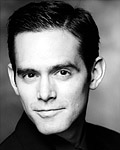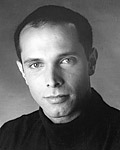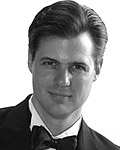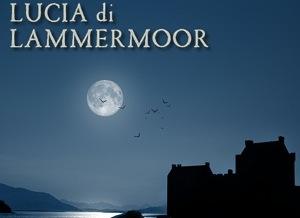
Festival Opera of Walnut Creek is continuing its summer season with Gaetano Donizetti’s masterpiece, Lucia di Lammermoor. The production opens Aug. 7, and the four performances will feature almost entirely Bay Area artists. Soprano Angela Cadelago, who last year pleased East Bay audiences by essaying all four heroines in Berkeley Opera’s Tales of Hoffman, will sing the title role in her company debut. She will be joined by former Adler Fellow Thomas Glenn, San Franciscan Brian Leerhuber (Festival’s Don Giovanni in 2006), and Opera San José alumnus Kirk Eichelberger, who played Mephistopheles in Festival’s production of Faust last season. (See SFCV interview.)
No single, definitive version exists of Donizetti’s score for Lucia. In its day, a French version was given, while orchestration in Italian theaters was frequently altered. Recent productions at the Metropolitan Opera and elsewhere have used a glass harmonica for the famous mad scene and have included ornamentation and interpretation to suit the gifts and preferences of star sopranos such as Natalie Dessay. Festival’s production will feature Music/Artistic Director Michael Morgan’s own reduction of the score for an ensemble of about 30 players, including a harpist. The mad scene will feature flute.
Listen to the Music
Asked about working with Cadelago, Maestro Morgan describes enjoying the variety of vocal color the soprano brings to the role and emphasizes the way it supports the drama. “It is my first time working with Angela, and I actually find her more colorful than some of the readings of this piece that give just a birdlike, coloratura soprano. Her voice is actually more steely, more dramatic. It’s particularly dramatic how much she sounds like [Beverly] Sills, and it serves her extremely well in all the dramatic parts. And because we have a choreographer [Mark Foehringer] who is directing his first opera on his own, a lot of people are getting to do things that are physically more dramatic than, perhaps, they might if it were a traditional opera director.

“So, with Angela,” he continues, “it’s been particularly a pleasure, because she has all these additional colors to bring to the role.” Going on to discuss the production concept and design, Morgan says, “It’s actually rather traditional, because it’s a coproduction with Birmingham Opera in Alabama. It’s a pretty traditional setting, which always requires more research on the part of the stage designer [Peter Crompton] and director to be more faithful to the period. Opera is always [taking place in] sort of an imaginary period, but it’s very traditional in that sense. And I’ve always thought that the difference between a good evening in the theater with a bel canto opera and a not good one is whether you actually light a fire under the drama, however convoluted the story is. This is actually a little more straightforward than most, so we are able to get into it more directly and make it speak more directly to the emotions of two people. The costumes and period setting don’t interfere with feeling the emotions of the characters, which sometimes happens.”

Describing the process of working with singers in such a character-driven piece, Morgan had this to say: “What you do is, you make a context for the singers overall, and then you try to play to the strengths of the individual people who are actually singing in the production. You find parts of their personalities that speak through the characters. It’s never 100 percent typecast, but you do want to use as much of their own personalities as you can in putting across the characters. And then my job as a conductor is to keep it all focused on moving the story forward.”
On the subject of the music itself, Morgan cites his favorite parts of the score and suggests that perhaps they are not always given their musical due. “I think, musically, the part of the opera from the sextet to the end of the second act is some of the most exciting opera music ever written. It doesn’t always get credit for being really exciting opera music, not to mention being clearly inspiration for a lot of Verdi that came afterwards. You can hear a lot of Traviata, you can hear Nabucco, and his other operas coming. So that period, from the sextet to the end of the second act, sweeps along and is the real highpoint of the whole thing.”

The story of Lucia di Lammermoor, based on the novel of Sir Walter Scott, debuted in Naples in 1835 and tells of a love story and family feud. It is a tale of betrayal, obligation, and passion. To avoid giving away the ending, I’ll only say that after a performance of Lucia, it seems by comparison that Romeo and Juliet got off easy and that the costume crew at Festival Opera is probably at the store right now, stocking up on stain remover. If you are interested in passion, bloodshed, virtuosic singing, and a truly Italian opera featuring the best of local talent, you can enjoy Festival’s Lucia di Lammermoor at the Lesher Center for the Arts in Walnut Creek on Aug. 7, 10, and 13 at 8:00 p.m. and at a Sunday, Aug. 15, 2 o’clock matinee.

